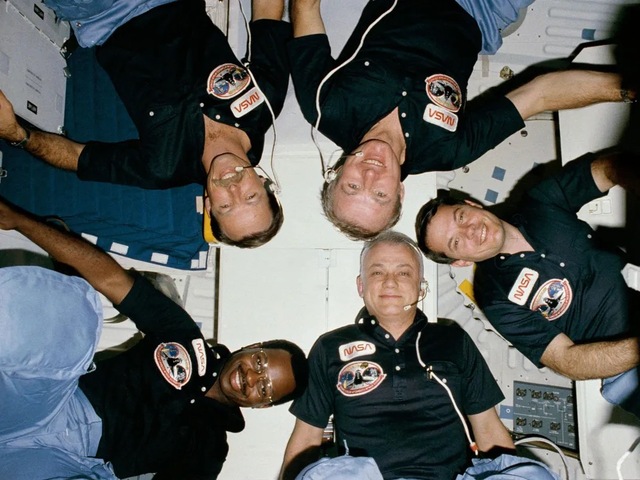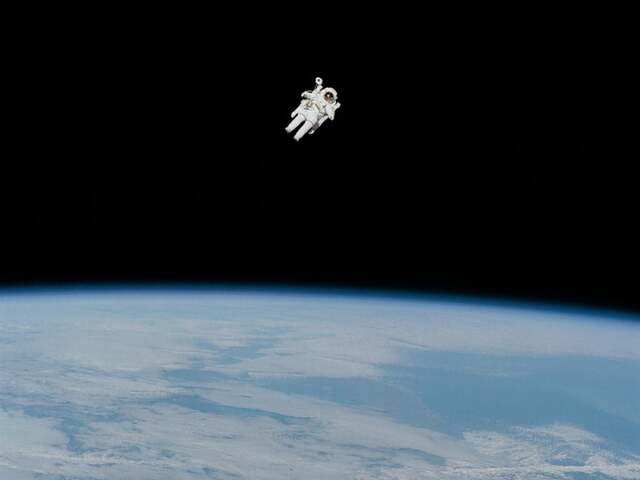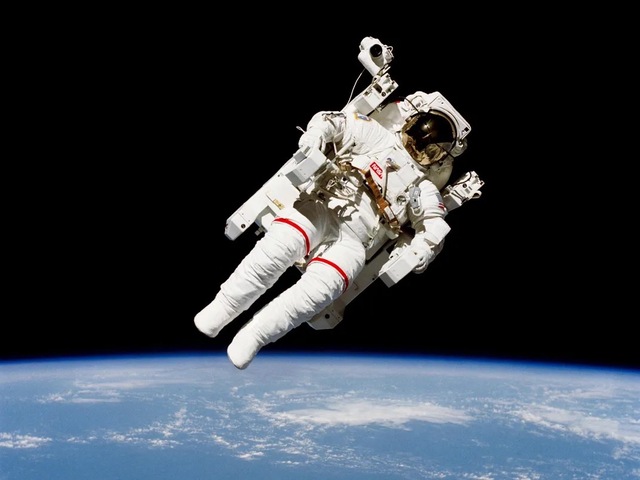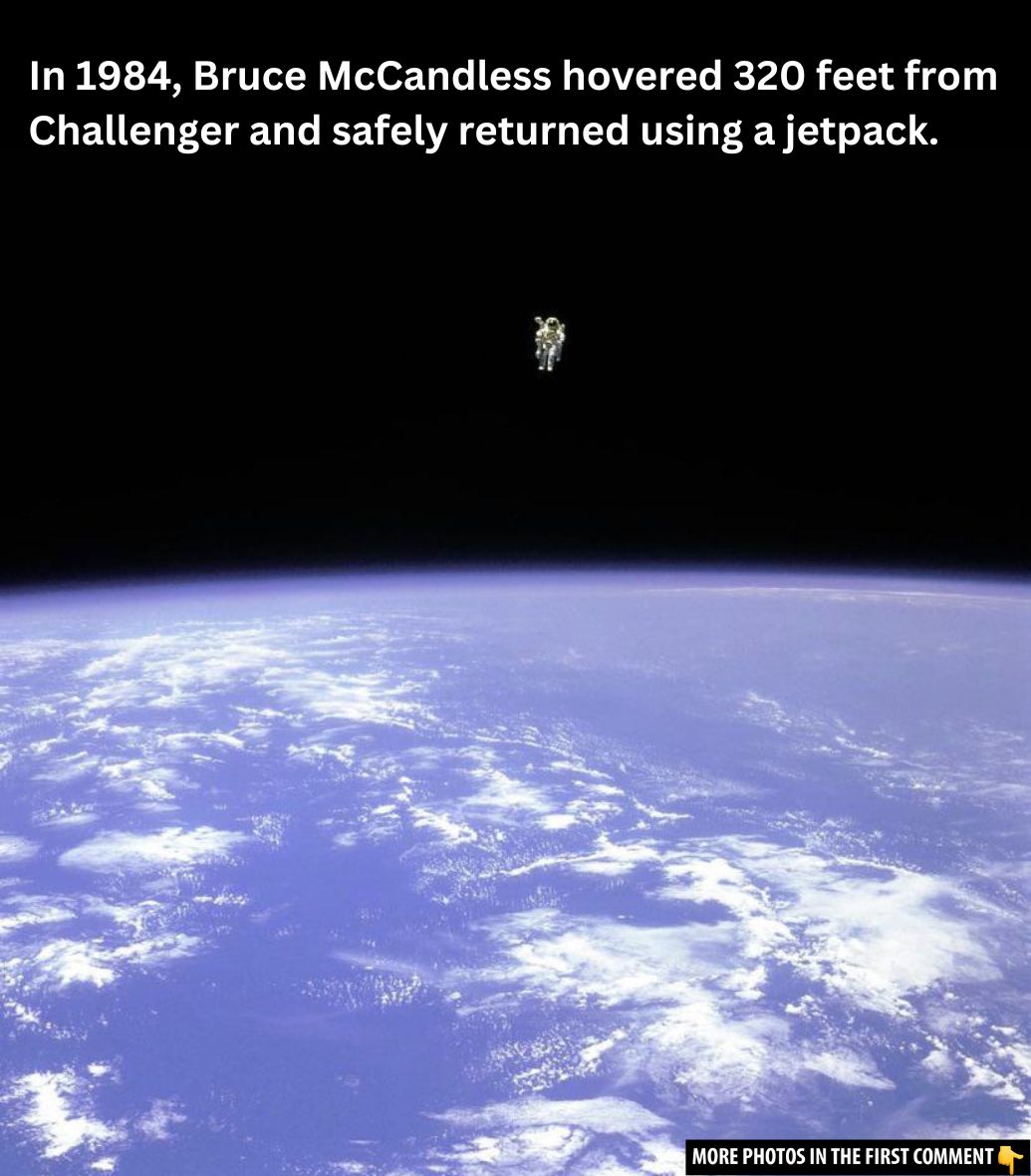On February 7, 1984, astronaut Bruce McCandless became the first person to float freely in space, marking a pivotal moment in the history of space exploration. The event, which took place during the Space Shuttle Challenger mission, was a milestone in NASA’s ongoing efforts to push the boundaries of human capability and technology. McCandless’s untethered spacewalk was not only a technical achievement but also a stunning demonstration of human ingenuity, and it remains a defining moment in the legacy of space exploration.
Introduction to the Historic First Untethered Spacewalk
The first untethered spacewalk was not just about floating in the vacuum of space; it was a dramatic leap forward in space technology. The Manned Maneuvering Unit (MMU), a nitrogen-propelled backpack, allowed astronauts to leave the confines of their spacecraft and move freely in space. The idea behind the MMU was to give astronauts the ability to conduct spacewalks without the need for tethers, thus giving them more mobility and freedom. For years, spacewalks were tethered, meaning astronauts were physically connected to the spacecraft for safety. But McCandless’ spacewalk represented a game-changing moment.
The launch of Challenger on February 3, 1984, had already captured the world’s attention. It was an exciting time for space exploration, and the media buzzed with anticipation for what would come next. However, the first few days of the mission were plagued by technical issues. The launch of satellites experienced some setbacks, and even the shuttle’s toilet system failed. But when McCandless and his fellow astronaut, Colonel Robert L. Stewart, stepped into the airlock to test the MMU, the mission was given a renewed sense of excitement and purpose.
Video
Watch this video to see Bruce McCandless become the first astronaut to fly a jet pack in space, as featured in When We Left Earth!
Bruce McCandless and the Manned Maneuvering Unit (MMU)

Bruce McCandless was a veteran astronaut, having signed up for NASA during the Apollo program, but it took him nearly 18 years to see his dream of venturing into space realized. As part of the Challenger crew, McCandless was tasked with testing the MMU, a new piece of technology that would allow astronauts to fly freely in space for the first time. The MMU was a complex piece of equipment that would need to be controlled by hand-held thrusters, and it required the utmost precision to operate.
The development of the MMU was an essential component of NASA’s vision for future space missions, allowing astronauts the freedom to work on space stations, conduct scientific experiments, or even repair satellites without being tethered to a spacecraft. McCandless had undergone rigorous training for the MMU, learning how to control it in a zero-gravity environment, and was ready for the historic moment that would unfold on February 7, 1984.
The Moment of Launch: McCandless’ Historic Spacewalk

At 7:25 AM on February 7, 1984, McCandless activated the MMU and slowly lifted off from the Challenger’s cargo bay. As he floated away from the spacecraft, a sense of wonder and awe filled him. For the first time, McCandless was completely free in space, with nothing tethering him to the shuttle. As he moved further away from Challenger, he tested the thrusters, checking the pack’s ability to control his movements. “Pitch down, pitch up, roll left, roll right,” McCandless called out, his voice steady but filled with excitement.
As McCandless floated farther from the shuttle, the isolation of space became palpable. The surrounding emptiness was overwhelming, and yet, he remained composed, relying on his training and the technology at his disposal. His breath was shallow, and his palms, though sweating, gripped the controls tightly. This was a moment he had worked toward for years—stepping into the unknown and becoming the first human to move freely in space.
Testing the Manned Maneuvering Unit
McCandless’s primary objective during the spacewalk was to test the MMU. Moving backward slowly, he preserved the precious fuel in the MMU’s nitrogen tanks. As he ventured farther from the shuttle, he took careful measurements using a crude rangefinder to ensure he didn’t drift too far away. His control of the MMU was crucial, and each movement was calculated to ensure a safe return to the Challenger.
At one point, McCandless did a somersault, testing the full range of movement available to him in space. It was exhilarating for him, but the mission was also about practicality—this test could change the future of how humans worked and traveled in space. The ability to fly freely in space, without being tethered to a spacecraft, meant that astronauts would have a new way to perform repairs, conduct research, and operate within space stations. The test was not only a technological breakthrough but a vision for the future of space exploration.
The View of Earth: A Glimpse of Florida from Space
As McCandless floated 320 feet away from the Challenger, he took a moment to appreciate the view of Earth. The curvature of the planet was visible beneath him, and he could see the blue band of the Earth’s atmosphere. In that moment, McCandless felt a sense of awe as he looked down on Florida. “It really is beautiful,” he said as he gazed at the coastline below. For a brief moment, he was overwhelmed by the sight of our planet from space—a view only a handful of humans had ever experienced.
The view was a reminder of the incredible scale of space and the unique privilege McCandless had to be there. The vastness of space seemed to engulf him, and he understood the immense significance of his achievement.
Teamwork and Support: McCandless’ Crew and Mission Control

While McCandless was out in space, his team aboard the Challenger remained vigilant, ensuring his safety and monitoring his progress. Robert L. Stewart remained in the payload bay, conducting other experiments, while Ronald E. McNair operated the shuttle’s robotic arm, which was ready to pull McCandless back if necessary. Mission Control was in constant communication with the astronauts, keeping them on track and ensuring the success of the mission.
The teamwork was critical, as McCandless’ freedom in space depended on the coordination of his fellow astronauts and the careful planning that had gone into this historic mission. The success of the spacewalk demonstrated the strength of NASA’s collaborative efforts and the bravery of the astronauts involved.
Iconic Spacewalk Photography
As McCandless floated freely in space, one of the most iconic photographs in space exploration history was taken. Robert L. Gibson, the Challenger’s pilot, captured McCandless against the backdrop of the blackness of space. The image, which shows McCandless in his white space suit with the Earth below, is one of the most striking and powerful representations of humanity’s presence in space. It became an emblem of the limitless possibilities of human exploration and is remembered as one of the most beautiful images in the history of spaceflight.
Video
Watch this video to witness the world record supersonic freefall!
Conclusion: Legacy of the First Untethered Spacewalk
McCandless’s first untethered spacewalk was a monumental achievement in the history of space exploration. It was a testament to human ingenuity, determination, and the relentless pursuit of knowledge. The ability to move freely in space has opened new doors for future missions, and the advancements made during that spacewalk continue to inspire astronauts and space enthusiasts around the world.
Bruce McCandless’s achievement proved that the impossible could be accomplished and set the stage for future space missions that would continue to push the boundaries of what is possible. The first untethered spacewalk was not just a small step for McCandless—it was a giant leap for humanity’s exploration of the stars.



